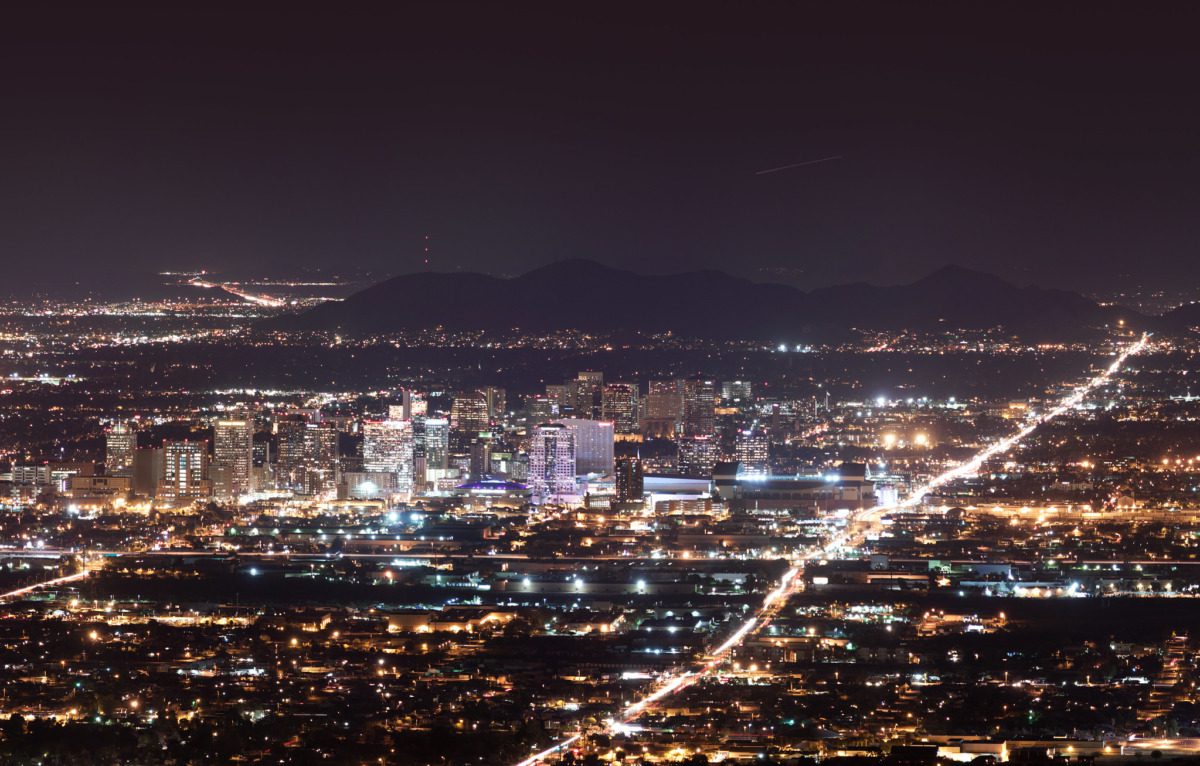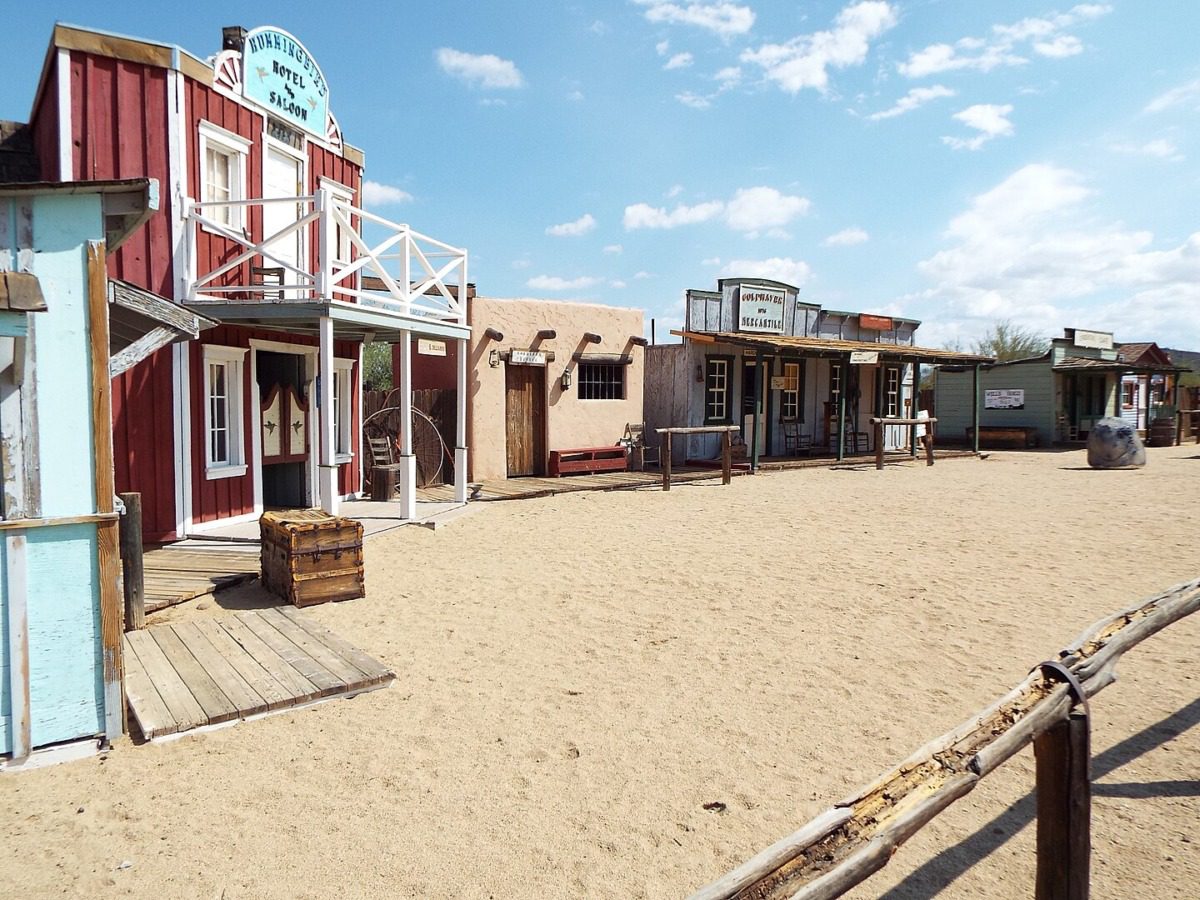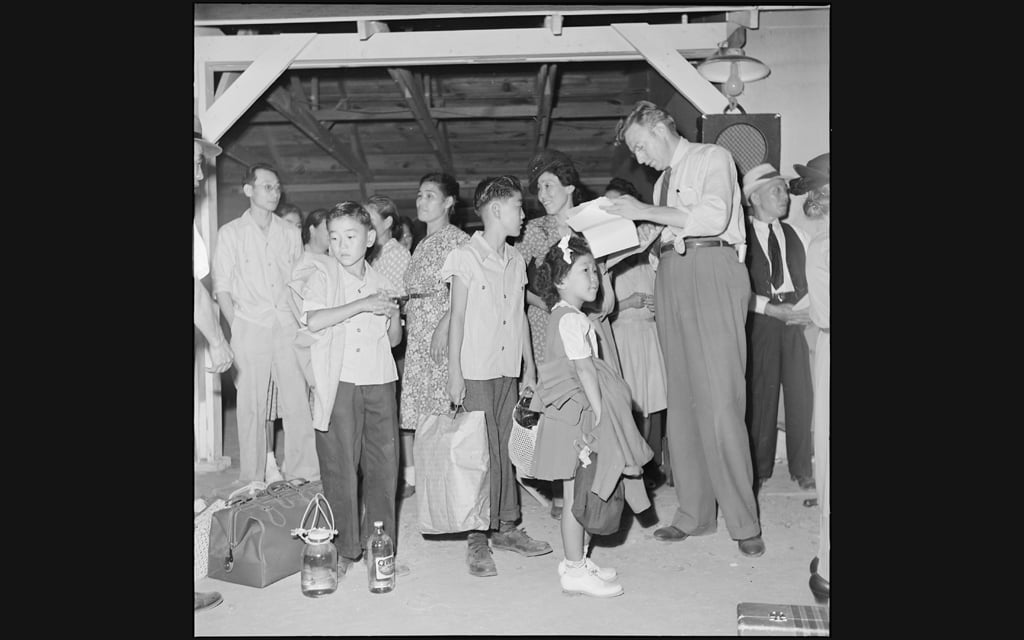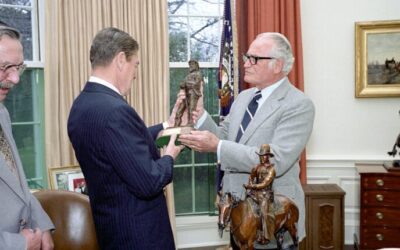
Photo courtesy of Alan Stark/Flickr.
Explore Phoenix’s history—from ancient Hohokam settlement to modern metropolis—that shaped the Southwest’s largest city.
Today’s Phoenix arose quite literally from the ashes of an ancient civilization—a fitting origin for a city named after the mythical bird of rebirth. Long before it became the nation’s fifth-largest city, this patch of Sonoran Desert was home to the sophisticated Hohokam people, who engineered an intricate network of canals that still serves as the foundation for modern Phoenix’s water system. When Civil War veteran Jack Swilling arrived in 1867, he recognized the agricultural potential of this sun-drenched valley, spotting traces of those ancient waterways beneath his horse’s hooves. From that moment of inspiration to its present-day status as a booming Southwestern hub, Phoenix’s journey has been one of continuous reinvention, marked by resilient pioneers, innovative planning, and an unwavering spirit.
Ancient roots in the Valley of the Sun
Between 700 AD and 1400 AD, the Hohokam people established a thriving civilization in what would become Phoenix, engineering an impressive 135-mile network of canals that transformed the arid valley into fertile farmland. Their mysterious disappearance—possibly due to prolonged drought—led later tribes to name them “Ho Ho Kam,” meaning “the people who have gone,” leaving behind remnants of their innovative irrigation system that would later inspire Phoenix’s founders.

Photo courtesy of Wikimedia Commons.
From Swilling’s vision to frontier town
In 1867, Jack Swilling recognized the valley’s agricultural potential and established the Swilling Irrigation Canal Company, reviving the ancient Hohokam canals. The settlement first went through several name proposals, including Pumpkinville and Stonewall, before pioneer Darrell Duppa suggested “Phoenix,” drawing parallels to the mythical bird rising from an ancient civilization’s ashes. The town was officially recognized on May 4, 1868, when the Yavapai County Board of Supervisors formed an election precinct.
Growing pains and progress
By 1881, Phoenix had grown from a small agricultural community to an incorporated city of 2,500 residents, led by its first mayor, John T. Alsap. The arrival of the Southern Pacific Railroad in 1887 and the Santa Fe, Prescott and Phoenix Railroad in 1895 revolutionized the city’s economy, transforming it from a farming settlement into a bustling commercial center. The construction of Roosevelt Dam in 1911 marked another pivotal moment, securing both water and electrical power for the growing metropolis.
Modern Phoenix takes flight
The post-World War II era marked Phoenix’s transformation into an industrial city. The establishment of military installations like Luke Field and Williams Field brought thousands to the area, many of whom returned with their families after the war. This population boom sparked rapid development and diversification of the economy beyond agriculture. By 1950, the city had grown to 105,000 residents and continued to expand through innovative urban planning and citizen-supported improvements.
Preserving natural treasures
While embracing growth, Phoenix has maintained a strong commitment to preserving its natural landscape. South Mountain Park, established in the 1920s and now spanning 16,000 acres, stands as the largest municipal park in the United States. This dedication to open spaces continues today, with the Phoenix Mountain Preserve System protecting more than 37,000 acres of desert landscape, ensuring that future generations can experience the same rugged beauty that attracted the city’s first settlers.

Photo courtesy of Trevor Huxham/Flickr.
Phoenix today
From its humble beginnings as a farming settlement, Phoenix has evolved into the nation’s fifth-largest city, covering more than 500 square miles with a population exceeding 1.4 million. Despite this dramatic growth, the city maintains its reputation for friendliness and community involvement, earning multiple “All-America City” awards for citizen participation in government. As Phoenix continues to grow, it stands as a testament to the pioneering spirit and adaptability that have defined it throughout its history.
This story was generated in part by AI and edited by The Copper Courier staff.
This article first appeared on Good Info News Wire and is republished here under a Creative Commons license.
READ MORE: What Arizona’s immigrant population looked like in 1900

Internment camps for Japanese Americans in Arizona relied on same 1798 law Trump invoked for deportations
President Trump’s rare use of the Alien Enemies Act has triggered memories of the country's dark chapter of Japanese internment camps. WASHINGTON –...

The 10 best movies set in Arizona
From action and comedy to thrillers and heartfelt dramas, these 10 movies set in Arizona capture everything there is to love about the Grand Canyon...

Pentagon blames ‘mistake’ for deletion of Navajo Code Talkers pages in DEI scrub, says content will be restored
The Pentagon called the removal of Navajo Code Talker content a “mistake,” vowing Tuesday to restore material taken offline during a scrub of DEI...

7 untold stories about the Grand Canyon
Legends, myths, and conspiracies all shroud the Grand Canyon in mystery. While there are many popular stories to "gorge" yourself on, these seven...





